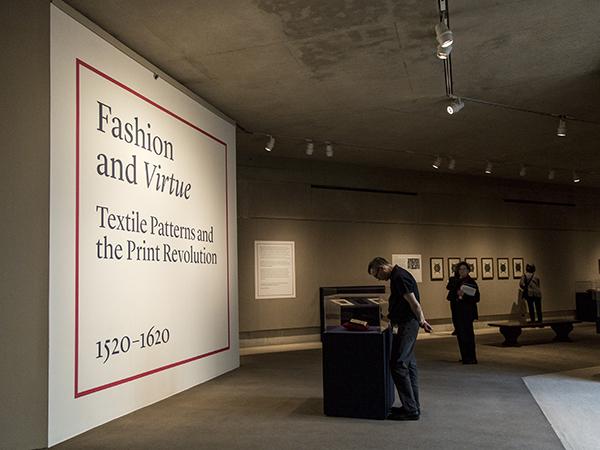Two worlds meet at Met

“Celebrating the Art of Japan” brings together a massive collection of Japanese art, covering many statues, paintings and poems that span centuries of Japanese history.
October 26, 2015
The Metropolitan Museum of Art opened two radically different but equally comprehensive galleries this week: “Fashion and Virtue” depicts the rebirth of European industry while “Celebrating the Art of Japan” spans the entire history of Japan. Despite such differing origins, the shared passion, creativity and sense of global interest of the two exhibits is utterly fascinating.
“Fashion and Virtue” explores the evolution of the textile industry from a single stitching by a woman to a massive, interconnected community of artists. Beginning with several Leonardo DaVinci designs, the rise of pattern books began in the 16th century, spreading fabric styles across Europe.
The gallery very deliberately refers to these creators as artists, comparing the passion and creativity needed for what was originally housework to that of a painter or sculptor. The exhibit goes to great lengths to explain how textile creation developed over time into a full-fledged art form, with collaboration among creators and the variations on styles and techniques. The gallery ingeniously carries this idea into a hall of dresses, showing off how this vision has been carried nationally. “Fashion and Virtue” takes something as simple as textile and reveals the passion and drive behind it beautifully.
“Celebrating the Art of Japan” is more specific, bringing together a massive collection from Mary Griggs Burke — one of the great Japanese art collectors in the world. The result is a gallery covering the many statues, paintings and poems that span centuries of Japanese history. This historic span and diversity in art objects help the gallery stand out as a truly massive collection.
The images from eras of war and peace make stark contrasts between scenes of action and tranquil moments of citizen life, while eras of cross-cultural inspiration from China and Korea create beautiful examples of the Asian cultures fusing. There are also fascinating pieces of ink and painting scrolls, which tell stories of folklore and visualize them in beautiful detail. Several wonderful storytelling works are a part of the collection — the art depicts many mythical creatures beautifully. But the best works are the simple paintings of nature. The minimalist detail and color is nothing short of stunning, as blank spaces give branches, animals, mountains and rivers space to hazily hang on the scrolls. The results are something dreamlike, tranquil and unlike anything you see in other cultures.
There is no other collection of Japanese art of this magnitude in the city or even the country. And the result truly is an incredible celebration of Japanese culture and a must see for any art enthusiast. In conjunction with “Fashion and Virtue,” the two exhibits at the Met create a double feature that capture the intricate stitches of fashion to the sprawling scrolls from Eastern Asia.
A version of this article appeared in the Oct. 26 print edition. Email Carter Glace at [email protected].














































































































































